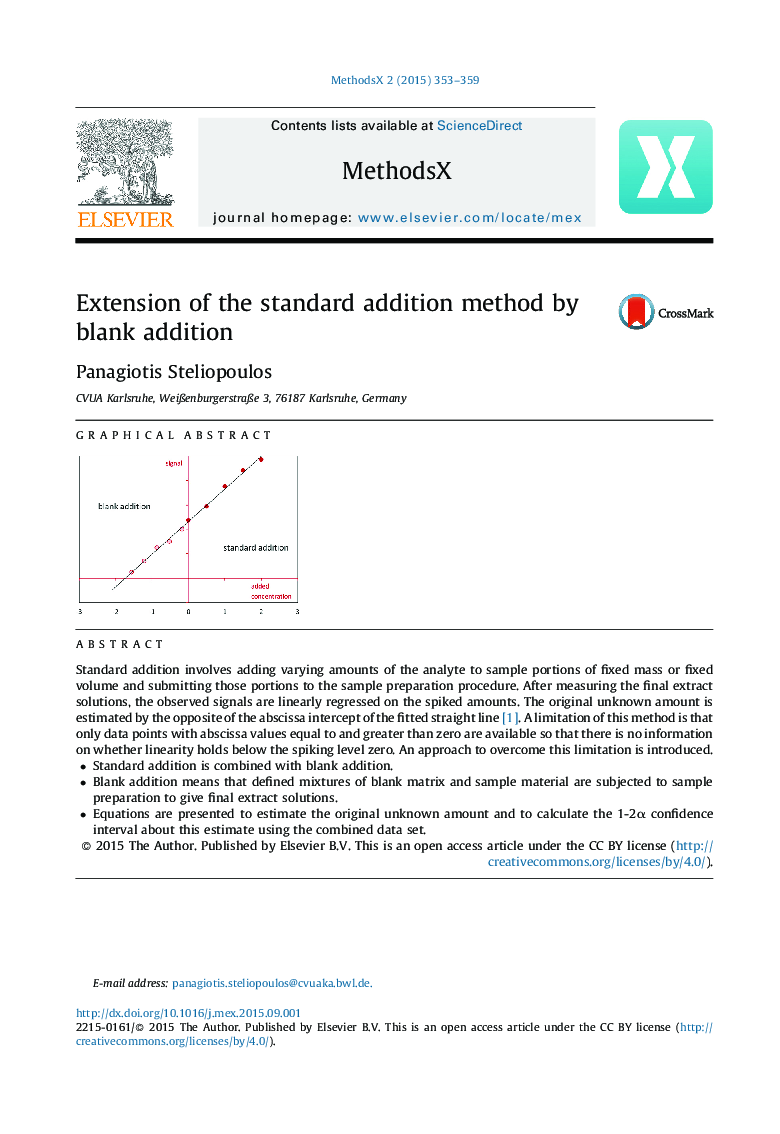| Article ID | Journal | Published Year | Pages | File Type |
|---|---|---|---|---|
| 2058757 | MethodsX | 2015 | 7 Pages |
Standard addition involves adding varying amounts of the analyte to sample portions of fixed mass or fixed volume and submitting those portions to the sample preparation procedure. After measuring the final extract solutions, the observed signals are linearly regressed on the spiked amounts. The original unknown amount is estimated by the opposite of the abscissa intercept of the fitted straight line [1]. A limitation of this method is that only data points with abscissa values equal to and greater than zero are available so that there is no information on whether linearity holds below the spiking level zero. An approach to overcome this limitation is introduced.•Standard addition is combined with blank addition.•Blank addition means that defined mixtures of blank matrix and sample material are subjected to sample preparation to give final extract solutions.•Equations are presented to estimate the original unknown amount and to calculate the 1-2α confidence interval about this estimate using the combined data set.
Graphical abstractFigure optionsDownload full-size imageDownload as PowerPoint slide
